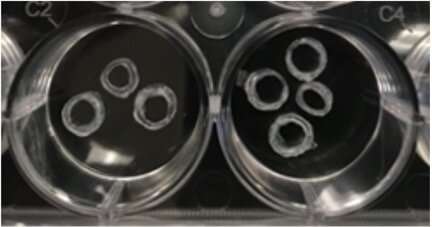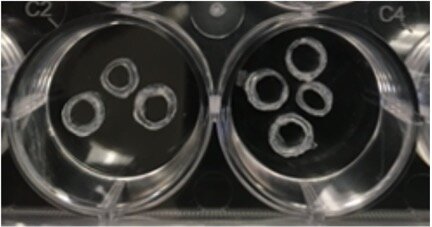New customizable, strontium-filled scaffold could improve dental implant healing

A team of University at Buffalo researchers has developed a new strontium-loaded scaffold that can be personalized to fit any size dental implant and could help improve healing and tissue attachment in patients.
The success of dental implants is dependent on the growth and adhesion of soft tissues to the implant surface. Previous research by UB investigators found that strontium, a bone-seeking element that improves bone density and strength, also supports soft tissue function. Strontium, they discovered, can promote the function of fibroblasts—a type of cell that forms connective tissues and plays a critical role in wound healing.
The new study, published earlier this year in the Journal of Biomedical Materials Research, found that scaffolds loaded with strontium—even at low concentrations—promoted wound healing by stimulating gingival fibroblast activity.
“Scaffold materials have been explored to promote bone and skin wound healing, but adaptations for the oral cavity are limited,” says lead investigator, Michelle Visser, Ph.D., associate professor of oral biology in the UB School of Dental Medicine. “These novel scaffolds represent a system for effective strontium release in the oral cavity.”
To produce the scaffolds—which are porous structures that promote and guide cell growth—the researchers developed reusable, ring-shaped templates and molds. The flexible hydrogel scaffolds are infused with a range of strontium concentrations that are released in an initial burst over 24 hours, followed by a sustained dosage over four days with minimal toxicity.
Source: Read Full Article
